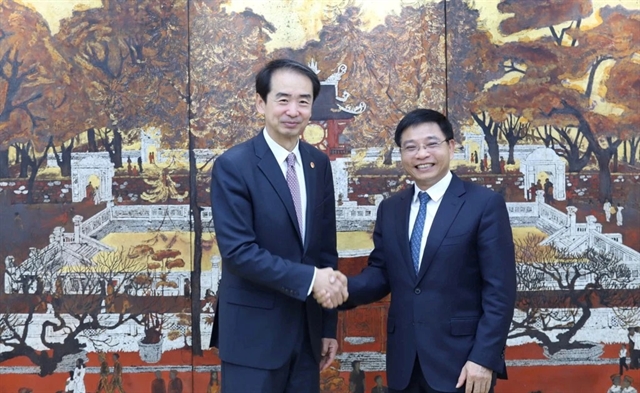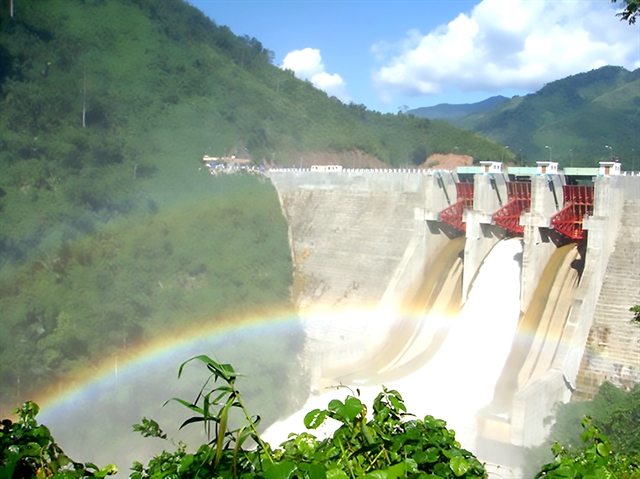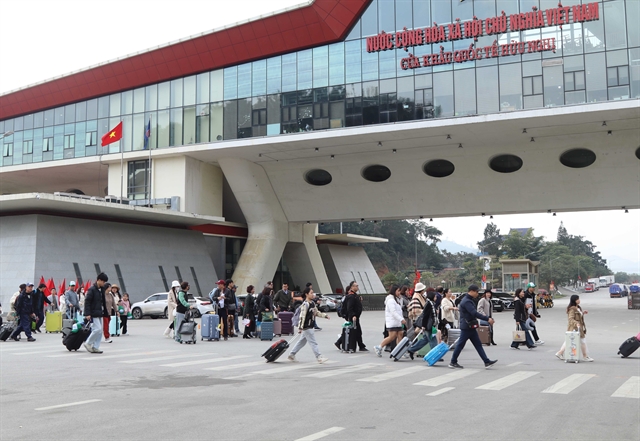 Economy
Economy

 |
| A Vuong Hydropower plant. — Photo avuong.com |
HÀ NỘI — The Vietnamese energy sector has revealed a stark contrast between the performance of hydropower companies and their thermal counterparts in the first half of 2025.
Favourable hydrological conditions have propelled hydropower firms to impressive financial results, while thermal power companies have struggled with declining production and profitability.
A Vuong Hydropower JSC recently reported its second-quarter financial results, showcasing a revenue of VNĐ146 billion (US$5.6 million), a 3.5 per cent increase year-on-year.
Notably, its net profit surged by 3.3 times to reach VNĐ45.3 billion.
For the first half of the year, the company achieved a total revenue of VNĐ276.7 billion and a net profit of VNĐ105 billion, representing increases of 18.6 per cent and 123 per cent, respectively.
Cao Huy Bảo, CEO and Board Member of A Vuong Hydropower, attributed this success to favourable water inflow conditions, stating the average water flow into A Vương's reservoir during the first six months of the year was 32.83cu.m/s, reaching 52 per cent of the annual target set by EVNGENCO2.
Similarly, Da Nhim - Ham Thuan - Da Mi Hydro Power reported substantial growth in the second quarter (Q2), with revenue reaching VNĐ630 billion and net profit soaring to VNĐ250 billion, marking increases of 53 per cent and nearly 60 per cent year-on-year, respectively.
As of June 30, it posted a revenue of VNĐ1.1 trillion, up more than 70 per cent from last year, and a net profit of VNĐ435 billion, up 100 per cent.
Central Hydropower also experienced remarkable growth, with nearly 60 per cent revenue increase and a 160 per cent rise in net profit, achieving VNĐ236.6 billion and VNĐ105 billion, respectively. The company attributed its success to effective water management strategies amid favourable hydrological conditions.
Nuoc Trong Hydro-Power (NTH) also reported strong results, with revenue of VNĐ32.2 billion and a net profit of VNĐ17.4 billion, reflecting increases of 21 per cent and 30 per cent.
NTH Director Ngô Trung Dũng said that good hydrological conditions significantly boosted electricity production, enhancing business performance.
In a notable turnaround, Hua Na Hydropower shifted from a loss of over VNĐ14 billion last year to a net profit of VNĐ133.5 billion in the first half of 2025, with Q2 alone contributing nearly VNĐ93 billion to this profit.
Challenges for thermal power companies
In stark contrast, the thermal power sector has faced considerable challenges.
Pha Lai Thermal Power saw its second-quarter revenue plummet by over 21 per cent to VNĐ1.94 trillion.
The absence of dividend payments compared to the previous year, coupled with a significant drop in electricity production, resulted in a staggering 93.5 per cent decrease in net profit, which fell to nearly VNĐ6.1 billion.
For the first half of the year, the company reported a revenue of nearly VNĐ3.5 trillion and a net profit of VNĐ58.4 billion, down 22 per cent and 77 per cent, respectively.
Its first production line has become a financial burden due to ongoing losses. In response to shareholder concerns regarding the operation of this line, management stated that the primary reason for the losses was the inability to implement significant repair projects, hindering thermal efficiency improvements.
The company is now working on a plan to repair individual units to enhance operational efficiency.
Meanwhile, Hai Phong Thermal Power experienced a 194 million kWh reduction in electricity production in Q2, leading to a 14 per cent drop in revenue and a more than 12 per cent decrease in net profit, which reached VNĐ2.97 trillion and VNĐ241.7 billion, respectively. Over the first two quarters of the year, Hai Phong Thermal Power achieved a total revenue of nearly VNĐ5.63 trillion and a net profit of VNĐ407.8 billion, down 9.8 per cent and 5.4 per cent year-on-year, respectively.
Quang Ninh Thermal Power was a rare bright spot in the thermal sector, achieving second-quarter revenue of VNĐ2.86 trillion, down over 21 per cent from the previous year. However, effective cost management allowed the company to increase its net profit by nearly 18 per cent, reaching VNĐ190.6 billion.
According to Vietcombank Securities (VCBS), hydropower plants are expected to be prioritised for maximum output in the second half of 2025 due to their lower electricity prices and seasonal demand patterns.
However, compared to the high benchmarks of 2024, hydropower companies may find it challenging to achieve outstanding growth in the last two quarters of the year.
Conversely, thermal power plants are projected to operate at high capacity in the latter half of the year, with declining coal prices potentially providing significant relief to these companies. — BIZHUB/VNS




